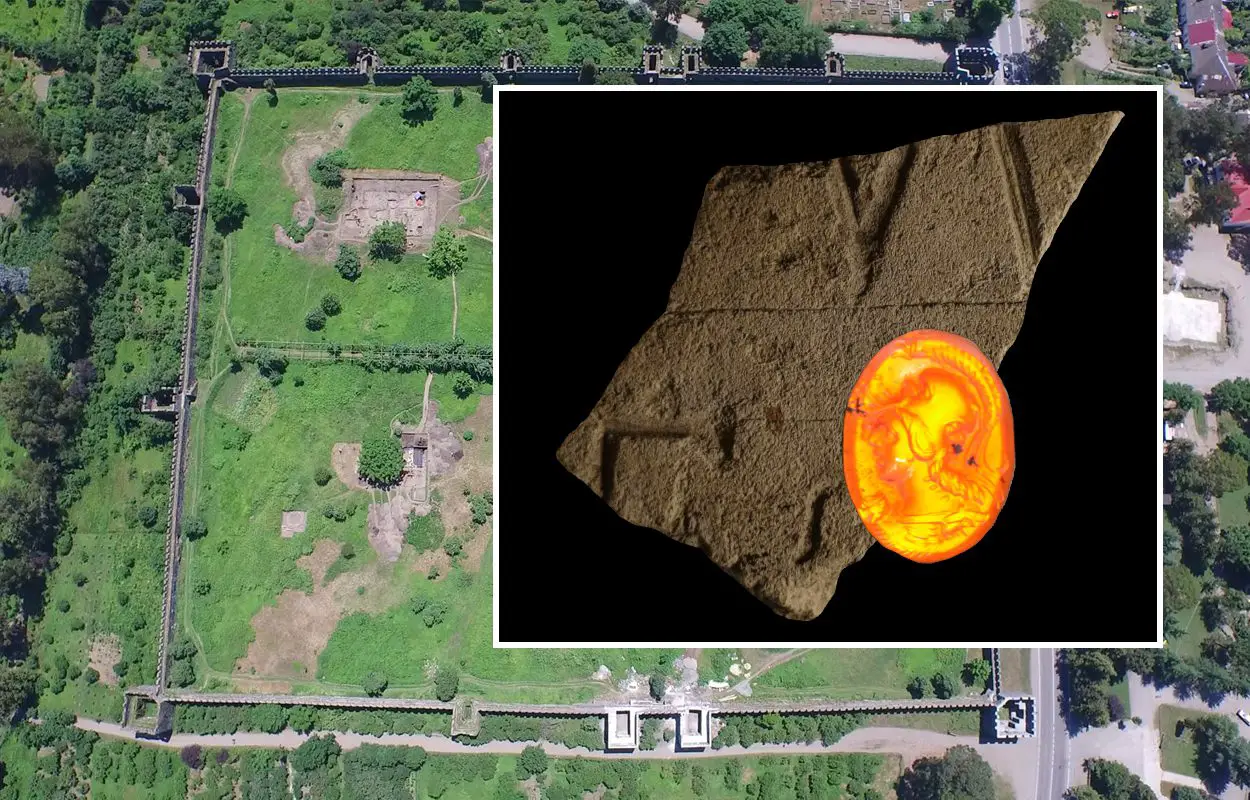Gonio, also known as Apsarus, is located in Adjara on Georgias Black Sea coast.
The earliest mention of Gonio dates from the 1st century AD in the Natural History by Pliny the Elder, and in Appian’s Mithridatic Wars from the 2nd century AD.
Previous excavations have found hundreds of bronze coins providing evidence of the Legio X Fretensis “Tenth legion of the Strait” at Gonio. The coins likely originate from the treasury of Judea and were transported by the X Fretensis on their way to campaign against the Parthians during the reign of Emperor Trajan.
In the latest excavation season, a Polish-Georgian mission, led by Dr. hab. Radosław Karasiewicz-Szczypiorsk from the University of Warsaw, has uncovered a fragment of a Latin inscription carved in a stone slab showing two surviving letters.
Another notable discovery is a carnelian gemstone featuring the image of Minerva, the Roman goddess associated with wisdom, justice, law, victory, and the patron of the arts.
Minerva also represents strategic warfare rather than promoting violence, in contrast to Mars, the god of war. The gemstone was originally placed on a ring, which according to the researchers was likely owned by a high ranking officer or perhaps, even the garrison commander.
Excavations also found a pottery kiln from the 1st century AD in the central part of the fort, which at the time during antiquity would have been located outside the fortress walls until a later expansion of the fortress footprint.
The archaeologists suggest that the furnace might have been employed in the production of wine amphorae, as one of these transport vessels was discovered in situ. This is supported by previous excavations, where outside the fortress a wine press from the 2nd-3rd century AD was uncovered that indicates a local economy of wine production.
Header Image Credit : University of Warsaw





